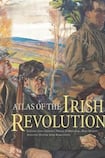
This book magnificently dissects the Irish revolution of 1913-23, layer by layer by layer. The words “landmark” and “groundbreaking” are much overused by publishers, but Cork University Press is much justified in employing those descriptions to trumpet this mammoth production, in all its glory, amounting to 5kg and one thousand pages of enlightened essays, chapters and case studies by over 100 scholars with accompanying maps, tables, statistics, photographs and documents. It should not be lifted without first bending the knees. But it should be read, consulted and savoured for many years to come by anyone with an interest in modern Irish history. It is also very fairly priced, given the extent of what it offers.
Its contribution to historical geography is also immense, underlining the extent to which topology and location played such an important role, not just during the war of independence but in relation to the civil war that followed. Never before has the revolution been presented in such cartographical detail (hats off to Graphics editor Nick Hogan), with maps delineating not just military matters but a whole host of political, social and civilian experiences (with much research done by Charles Roche and Helene O’Keeffe). There is also space given over to visual representations of the revolution and reflection on its legacy and afterlife, and the captions have been approached, not as a nuisance demanding brevity, but as explanations requiring short essays in themselves.
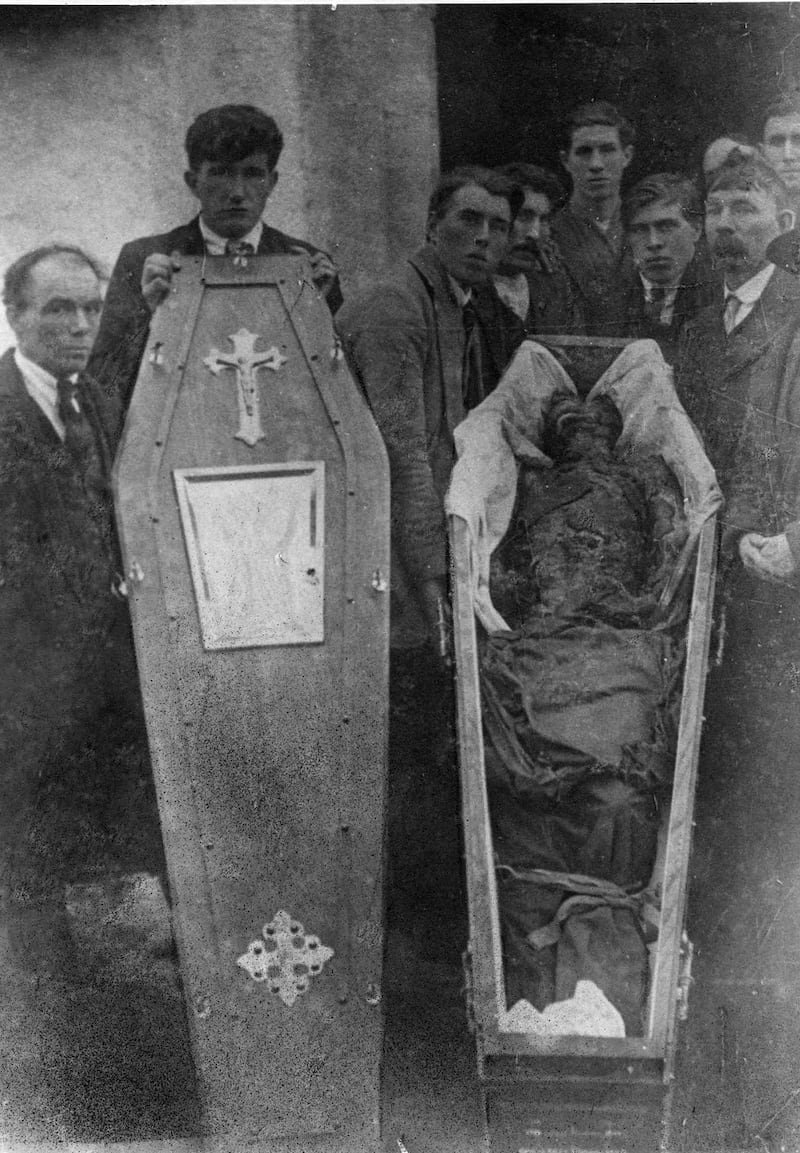
TCD history professor Walter Alison Phillips came to the task of writing his history early in The Revolution in Ireland 1906-23 (1923), in his own words, "as the embers of civil war were still glowing in Southern Ireland". In the decades since, the conflict has generated a vast library, much of it controversial and polemical, and in recent times the history of the revolution has been informed by the opening of voluminous archives, generating new perspectives and the revisiting of old assumptions. From 2014-16, for example, some 270 books and scholarly articles relating to the 1916 Rising alone appeared. This book makes the most of the new archival material with the added dimension of mapping the conflict in all its complexity, and the editors and designers deserve great credit for marshalling and distilling a huge range of perspectives, computations and images in an accessible and attractive format. Another notable and positive feature is the mix of seasoned and early stage historians, providing a variety of different tones and perspectives, some informed by decades in the historical game, others fresh with the muck of their own ploughed furrows in virgin terrain.
The book is a monumental reminder of the veracity of the assertion made by the late historian Peter Hart: that Ireland is a great laboratory for the study of revolution because "Ireland's is quite possibly the best documented revolution in modern history". The range of sources used in this book confirm that; archives that feature prominently include the National Archives of Ireland, the UK National Archives, the Public Record Office of Northern Ireland, the National Library of Ireland, the Irish Military Archives, the UCD archives, local authority archives and manifold private collections, as well as a range of newspapers. The book also draws heavily on the research infrastructure already in place, including numerous entries from the Dictionary of Irish Biography, published in nine volumes by Cambridge in 2009.
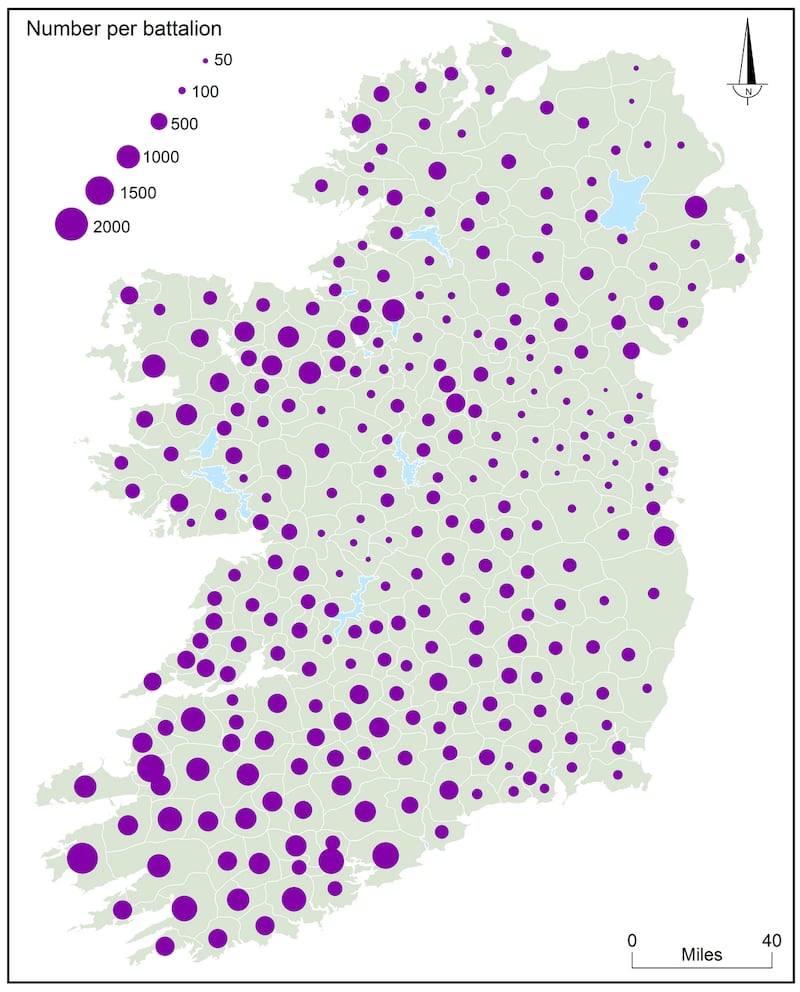
To begin, William J Smyth unfolds the landscape of contexts and class structures in 19th-century Ireland to provide background, including the distribution of schools, army barracks, diaspora, the extent of Mass attendance, the contributions to Daniel O’Connell’s political movements and the number of Gaelic League branches. Social conditions early the following century are traced through a case study by Catríona Crowe of Henrietta Street where, according to the 1911 census, 15 houses contained 835 people. At that stage the urban infant mortality rate was 150 per 1,000 live births and 74 in rural Ireland; at the other end of the scale, a map details the percentage of wills over £1,000 per county.
Patrick Maume is authoritative on the dilemmas of constitutional nationalism, the image of which is much marked by retrospection. Tim McMahon examines the Gaelic revival; when Gaelic Leaguers gathered, there “was more mixing of classes in the name of the revival than in almost any other contemporary setting in Ireland”. Hopes were high for a new beginning as underlined by Roy Foster and Margaret Ward; after the 1916 Rising, Hanna Sheehy Skeffington suggested it was “the only instance I know of in history when men fighting for freedom voluntarily included women”.
In relation to the period 1912-18, Frank Callanan warns against treating the home rule crisis and first World War disjunctively, while a map of Cork city’s Irish volunteers in 1914 reveals “a healthy cross-section of ‘respectable’ working class and lower middle-class Catholic society” though the poorest labourers did not participate much. There is a rare image of James Connolly addressing 8,000 people in Union Square, Manhattan in 1908; he and James Larkin, reminds Emmet O Connor, achieved a “substantial decolonisation of trade unionism but they were not completely successful”.
The detail on the first World War is absorbing, including soldiers’ separation allowance posters (a wife and two children of a sergeant were entitled to 23s 6d a week in March 1915) and a map of the sphagnum collection points after gathering by women at over 200 centres in Ireland; sphagnum was used to treat battle wounds owing to its antiseptic properties. Philip Orr reminds that the use of the Battle of the Somme legacy for Ulster Protestants often involved “adversarial relations with British political parties”, while Nicholas Allen observes that objects of empire co-existed with rebellion, including the Fusiliers’ Arch at St Stephen’s Green, inscribed with the names of 222 Royal Dublin Fusiliers who fought n the second Boer war (1899-1902); the arch was damaged in 1916 but survived.
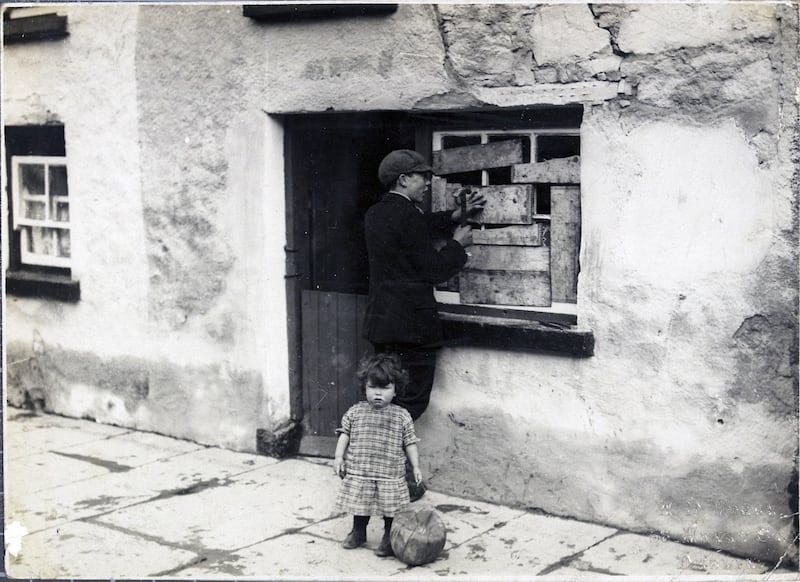
Fearghal McGarry offers a fluid, comprehensive overview of the 1916 Rising, accompanied by various maps of revolt, while the Dublin Metropolitan Police prisoners’ notebooks researched by Pádraig Yeates show how arrests correlated with deprived areas of the city. John A Murphy, sparkling with scepticism as always, subjects the misinterpretation of the words of the 1916 Proclamation to scrutiny, though “such academic intentions, even if noticed, have no effect”. The late Ronan Fanning observes in relation to Anglo-Irish relations that what passed as the Irish policy of the British government at that stage was solely about British war concerns, but John Borgonovo’s overview of the re-organisation of the Irish Volunteers after the Rising, through the use of Royal Irish Constabulary county inspection reports, indicates the brewing storm.
That storm – the war of independence – was no vindication of an astute master plan; rather, in the words of Joost Augusteijn, it was “a mixture of coincidence, unintended outcomes and local initiatives” and these are mapped in various ways, including a focus on guerrilla attacks and British troop deployments. William Sheehan teases out the geography of violence and David Leeson documents the role of the RIC, Black and Tans and Auxiliaries. As for the IRA, sources in the Irish Military Archives suggests the IRA from 1920-21 had a nominal national strength of 115,550, almost all part-time, which is just as well given that activists had access to only 3,000 rifles during that period.
How many IRA members were actively engaged is not specified but, as Michael Foy points out, Michael Collins’s organisation “far exceeded its limited resources in its power and impact on the enemy”; his footprint is reflected in a map of his offices, safe houses and meeting places. Marie Coleman notes “it is impossible to state accurately” the membership of Cumann na mBan, the female auxiliary of the IRA, but it had perhaps 20,000 nominal members in mid-1921. It had an uneven national organisation, as did the IRA, being much stronger in the West. Newspapers had to work under censorship and violent intimidation; between January and December 1920, 26 newspapers were put out of circulation.
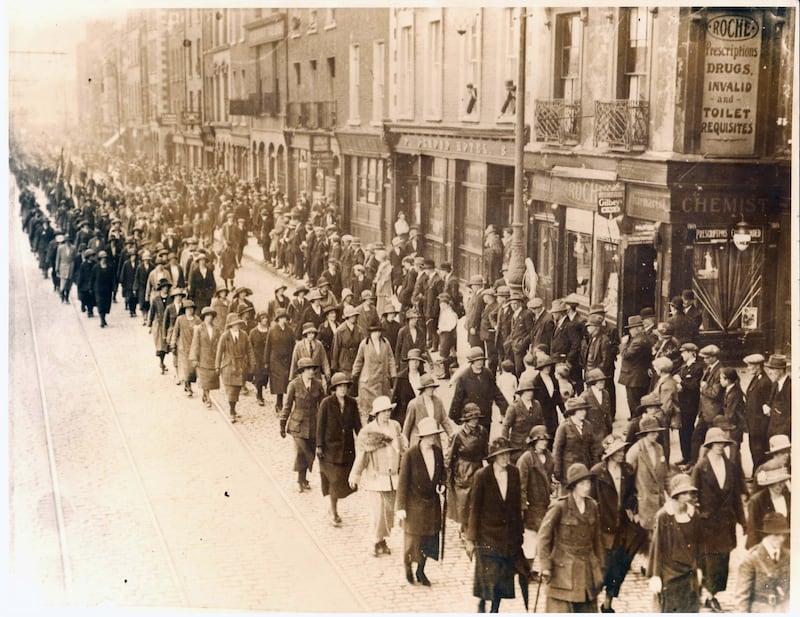
The IRA’s execution of alleged spies is scrutinised by Pádraig O’Ruairc; 196 civilians were killed by the IRA, 72 per cent of them Catholic, while “the execution of Protestants accused of spying was not widespread nationally”. It was difficult for the labour movement to breathe in the midst of all this mayhem; its watchword, Donal O Drisceoil reminds, was “caution”. As socialist republican Peadar O’Donnell saw it, “I’m in the wrong war”.
And what of the reaction to the killings and maiming? There were 3,800 Catholic priests in Ireland; the reported instances of clerical condemnation of the IRA by 149 clerics are mapped, while the infighting of Irish-American groups is also highlighted. An American Committee for Relief in Ireland sent a delegation of seven to Ireland in February 1921; the committee visited 95 locations and declared a need for $25 million; by July, nearly $5million had been sent to Ireland to be distributed by the Irish White Cross.
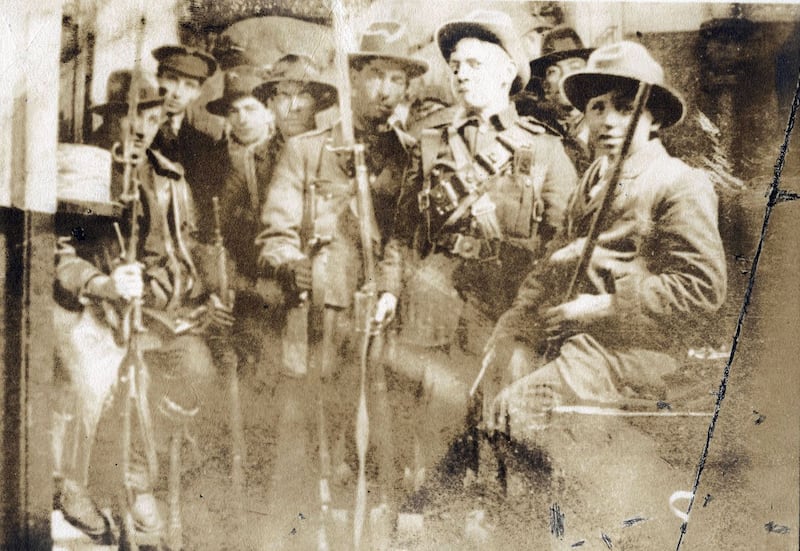
The regional perspectives receive much prominence here. David Fitzpatrick’s pungent introduction to this section suggests the proliferation of local studies to date has been an ultimately “inane pursuit of infinite variety” because it yields no general pattern, but an escape route “is to generate statistical data capable of being mapped by province, county or smaller unites”. This is what is done to considerable effect in relation to, amongst others, Cork, the most violent county, Limerick, Dublin, Sligo and Galway; Conor McNamara notes that only one member of the crown forces was killed in Galway city. In Ulster, Robert Lynch analyses the “lacklustre performance” of the Northern IRA; there was no such reluctance, however, when it came to violence in Belfast during this period, and 80 per cent of the victims were civilians.
The civil war, according to Bill Kissane, was both a "classic succession crisis" and a war for national legitimacy. The anti-Treaty republicans had no chance of victory, Michael Hopkinson observing that "despite all their rhetoric and occasional bombast", they had made "no adequate preparations for civil war". Nor was public or media opinion with them; a survey of Irish newspapers' reaction to the Treaty reveals that "only the Connachtman in Sligo, the Donegal Vindicator and the Waterford News took an explicit anti-Treaty position in 1921". Meanwhile, the Kilkenny People newspaper declared in vain "Ireland is too small for civil war". By its end, 11,989 were in prison, double the number in prison at the end of the war of independence, this information courtesy of expert analysis by William Murphy.
How many were killed during the revolution? It is still not known, a reminder that this volume does not and perhaps cannot give definitive figures on this question, an issue that nonetheless needs more probing than on offer here given the scale of this project. But the book does contain such gems as that offered by Marion Dowd on a “hitherto overlooked aspect of guerrilla tactics during the Irish revolution– the use of caves as hideouts or as places to stash arms. At present, 24 natural caves have been identified.” Gemma Clarke draws attention to previously neglected victims’ accounts of the cost of the carnage, as recorded in compensation claims submitted to both the British and Irish Free State governments.
There are numerous essays on the aftermath of the revolution, including Brian Hanley’s examination of whether the Blueshirt movement in the 1930s and the republican reaction to it was just a continuation of the civil war; this was “not a fight the IRA’s leaders ever wanted”. The new state for women, according to Margaret Ward, was “a far cry” from the idealism of revolutionary promise. A short section on the “architecture of containment”– the institutions relied upon in the new State such as industrial schools and Mother and Baby Homes – is inadequate and tokenistic and appears to have been included in reaction to recent controversy rather than to tease out the reasons why such institutionalisation was relied upon and the extent to which that dependence can be connected to the revolution and its legacy.
More satisfying are the essays and data on commemoration, including by Heather Jones on remembering the first World War; there were 50,000 people at College Green for Remembrance Day in 1924 and some high-profile memorials but “the vast majority of Ireland’s war memorials are deeply local”. Roisín Higgins offers an insightful and nuanced perspective on the commemorations of the independence struggle, underlining how historical memory is “deeply partial, personal and complex”, while Gearóid O Tuathaigh examines how the revolution has been written about over decades, and the degree to which historical accounts have been affected by ideological climate, intergenerational shifts, the Troubles in Northern Ireland and the recent appetite for more complicated and inclusive narratives.

History could also be successfully rewritten in other ways; the GAA ensuring, for example, that Hill 60 in Croke Park, named after a battle site at Gallipoli, was renamed Hill 16 to bogusly link it to the 1916 Rising. Roisín Kennedy dwells on visual culture, tracing the changes in the work of Jack B Yeats, a painter who took on the role of "compassionate observer" during the revolution. His later work, however, "mirrored the pervasive sense of incompletion that marked the post-revolutionary era". That observation comes at the end of an exceptionally informative, lavish and stratified book; it too, is incomplete, because no history of the revolution can be otherwise, but it does unparalleled justice to that revolution's contours, character and dynamic.
Diarmaid Ferriter is Professor of Modern Irish History at UCD and an Irish Times columnist











